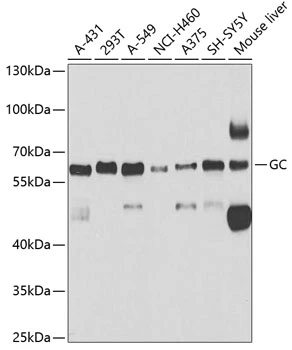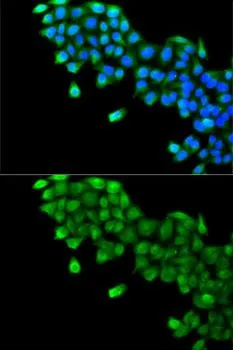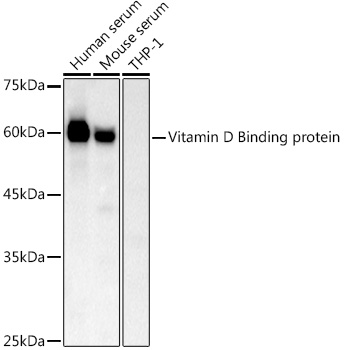
WB analysis of various sample lysates using GTX64444 Vitamin D Binding Protein antibody. The signal was developed with ECL plus-Enhanced. Dilution : 1:1000 Loading : 25microg per lane
Vitamin D Binding Protein antibody
GTX64444
ApplicationsImmunoFluorescence, Western Blot, ImmunoCytoChemistry
Product group Antibodies
ReactivityHuman, Mouse
TargetGC
Overview
- SupplierGeneTex
- Product NameVitamin D Binding Protein antibody
- Delivery Days Customer9
- Application Supplier NoteWB: 1:500 - 1:2000. ICC/IF: 1:10 - 1:100. *Optimal dilutions/concentrations should be determined by the researcher.Not tested in other applications.
- ApplicationsImmunoFluorescence, Western Blot, ImmunoCytoChemistry
- CertificationResearch Use Only
- ClonalityPolyclonal
- ConjugateUnconjugated
- Gene ID2638
- Target nameGC
- Target descriptionGC vitamin D binding protein
- Target synonymsDBP, DBP-maf, DBP/GC, GRD3, Gc-MAF, GcMAF, HEL-S-51, VDB, VDBG, VDBP, vitamin D-binding protein, epididymis secretory protein Li 51, gc protein-derived macrophage activating factor, gc-globulin, group-specific component (vitamin D binding protein), vitamin D-binding alpha-globulin, vitamin D-binding protein-macrophage activating factor
- HostRabbit
- IsotypeIgG
- Protein IDP02774
- Protein NameVitamin D-binding protein
- Scientific DescriptionThe protein encoded by this gene belongs to the albumin gene family. It is a multifunctional protein found in plasma, ascitic fluid, cerebrospinal fluid and on the surface of many cell types. It binds to vitamin D and its plasma metabolites and transports them to target tissues. Alternatively spliced transcript variants encoding different isoforms have been found for this gene.[provided by RefSeq, Feb 2011]
- ReactivityHuman, Mouse
- Storage Instruction-20°C or -80°C,2°C to 8°C
- UNSPSC12352203






